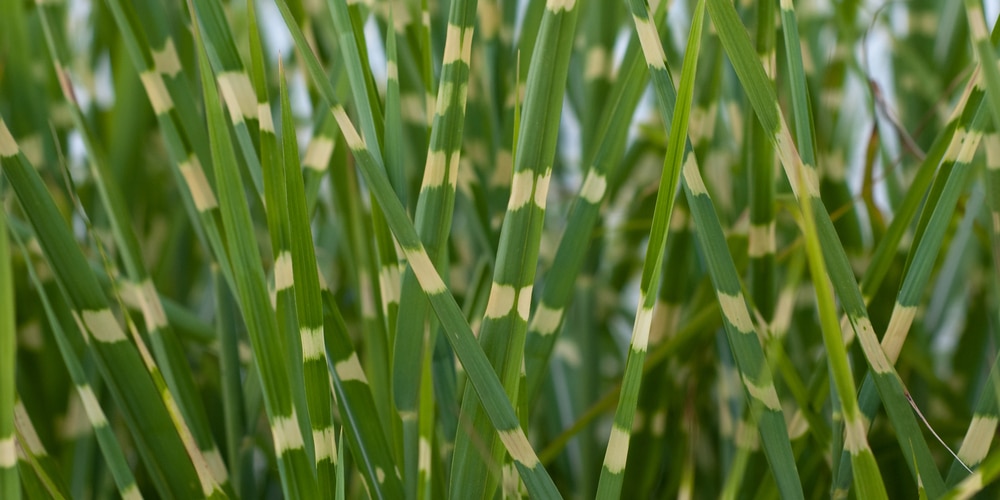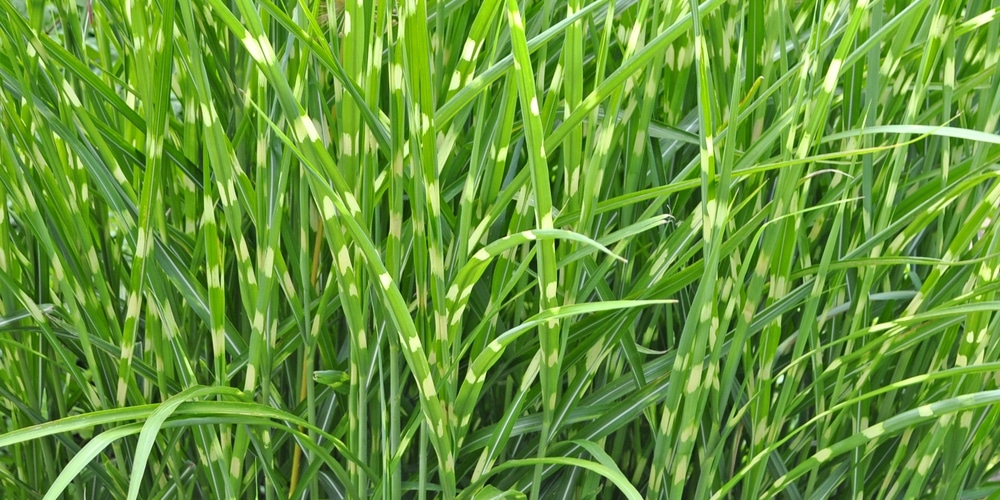Ornamental grasses are ideal solutions to improve the looks of your garden and make your landscaping more elegant. They tend to be relatively easy to care for, making them excellent options for beginner gardeners.
There are several varieties of ornamental grasses out there, giving you plenty of choices. However, some might look similar. Selecting one for your yard can become overwhelming!
If you want to learn more about the differences and similarities between porcupine grass vs. zebra grass, keep reading: you are in the right place!
Porcupine Grass vs Zebra Grass Similarities

At first, porcupine grass and zebra grass might look the same. The two plants share many characteristics. For instance, both are varieties of the deciduous Eulalia Grass. Plus, the two are tolerant to the weather conditions in USDA hardiness zones between 5 and 9.
Both plants have variegated green and yellow foliage, with horizontal stripes around their stems. Also, the two produce tiny fluffy blooms between August and February that appear in clusters. The color of the flowers might help you tell the two plants apart (more on this in the next section).
In terms of care, both plants have similar requirements. For instance, the two thrive in full sun or partial shade and prefer well-draining soils.
Even though the two plants are tolerant to drought, they perform much better with regular moisture. Keep this in mind when taking care of them.
Porcupine and Zebra grass are excellent options to grow as hedges, around borders, and in rock gardens. The two develop in clumps and won’t require much attention from your side once established.
Porcupine Grass vs Zebra Grass Differences

You will have to look at the differences to set these two plants apart. While both have similar-looking foliage, Porcupine grass leaves tend to be slim and narrow, while zebra grass has broader ones that grow downwards rather than straight up.
As we mentioned, you can also look at these plants’ flowers to identify them. Zebra grass produces pinky-white blooms, while the Porcupine variety has reddish ones.
Also, Zebra grass is slightly shorter than Porcupine, which can grow between 4 and 9 feet tall. The Zebra variety will usually grow no more than seven feet in height.
Because of their different growing habits, Porcupine grass will generally need more space to grow than Zebra Grass, which is more likely to flop over.
Overall, if you prefer elegant looks, you might benefit from planting Zebra grass in your garden: its arching habit and the delicate curve might improve the appearance of your garden.
But if you are a tidy person, who loves order, you might perceive the floppy appearance as unattractive. Porcupine grass might suit your needs better.
Porcupine Grass Vs. Zebra Grass: Growing Tips
As we mentioned before, growing these plants isn’t particularly challenging, provided that you know what to give them. Plant them under the full sun for optimal growth.
Also, don’t forget to keep them moist to improve their appearance. These plants will thrive in conditions between 70 and 90°F, making them ideal for growing in the warmer regions of the country.
Consider adding a layer of compost or manure to improve the nutrient conditions in the soil and boost these ornamentals’ growth.
To maintain these plants’ appearance, clean the old or dead stalks in late winter or early spring. Doing so will also encourage the formation over the following season.
Related Article: Fun Facts About Bamboo Grass